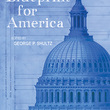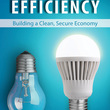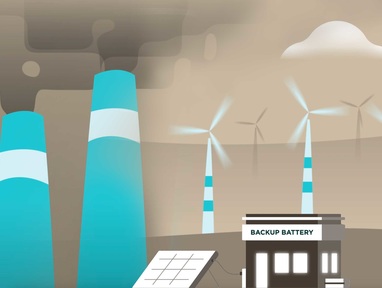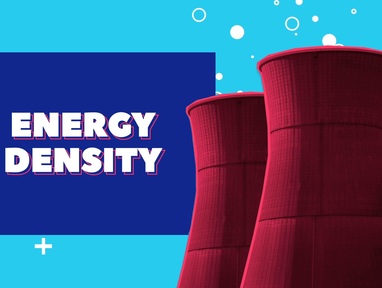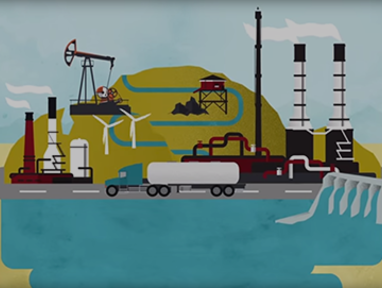Energy Policy Insight
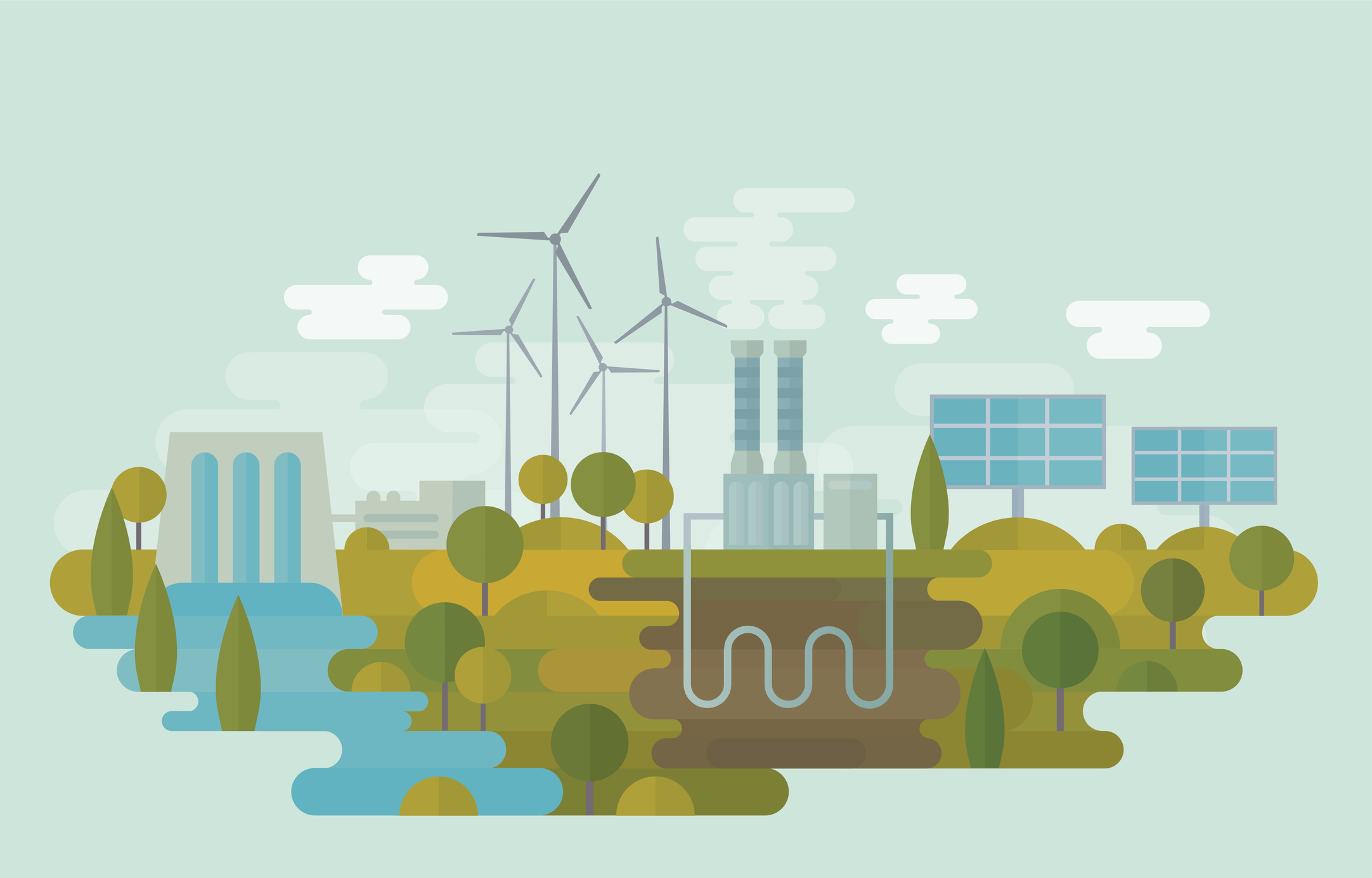
Over the last quarter century, the United States has experienced a dramatic transformation. With little fanfare, an energy revolution has occurred that has profoundly altered the nation’s economy, its national security, and its environment. No longer beholden to foreign nations to meet its energy demands, the United States now produces more energy than it consumes.
How did the nation get here? And, more importantly, where should it go?
Where does US energy policy stand?
Not long ago, the United States was heavily dependent on foreign oil to power its economy. With this dependency came geopolitical challenges that profoundly affected the nation’s foreign policy for decades. A heavy reliance on oil from members of the Organization of the Petroleum Exporting Countries (OPEC) meant the US foreign policy and economy were shaped by countries with little regard for the best interests of the United States.
Over the last two decades, however, the energy landscape has changed. Technological improvements—from hydraulic fracturing to improved battery technology—has turned the United States into a net exporter of energy. In Blueprint for America, Jim Ellis highlights the enviable position in which the United States finds itself:
“US overall petroleum production overtook Russia and Saudi Arabia in 2014 to become number one globally. Our fuel markets, refining, and trade infrastructure (even while currently challenged by a global environment of continued low prices) make us a lean and competitive supplier. Our energy business across sectors and fuels has a profound global reach. We lead on innovation in forms of energy both new and old. And as anyone who experienced Los Angeles basin smog in the 1980s can attest, the energy efficiency of our economy and improvements in environmental performance of our vehicles and power plants is breathtaking. We operate the largest carbon-free power generation fleet in the world, adding to it daily through new technologies.”
Ellis notes that technology has been the key driver to this revolution. Technological advancements have improved power-generating technologies. Developments in hydraulic fracturing and horizontal drilling have made it possible to extract oil and gas at lower costs. And, finally, increased energy efficiency by households and industries have reduced demands for power consumption.
But we should not be content with the remarkable gains the United States has recently achieved. Future generations deserve a thriving economy and clean environment, which will require further improvements to the nation’s energy policies. Fortunately, the recent progress means now is a perfect opportunity, in the words of Jim Ellis, “to pause, absent the clamoring pressures of an energy crisis, and dispassionately reflect on our country’s longer-term energy priorities.” What would that look like?
What’s next and what does energy security mean?
For many years, politicians regularly promised energy independence. While their definitions varied, energy independence generally meant that the country’s energy production was sufficient to meet its energy consumption—freeing the US economy from a reliance on OPEC.
After the energy revolution, however, the country is no longer reliant on OPEC for its energy needs. Now that its energy production exceeds its consumption, the United States can aspire for something more valuable than merely energy independence. It can now achieve energy security. The video below explains what energy security looks like:
Energy security means power is widely available, reliable, resilient, and affordable to all. These goals are far beyond what energy independence could promise. Jim Ellis explains why:
“Energy independence means that US factories and homes would stay supplied if all borders were to be shut down during a conflict, but it does not mean that our expeditionary military forces—or our allies and trading partners—would be similarly taken care of. Energy independence helps with one side of our balance of trade but, given global fuel markets, it does not always mean lower prices for US consumers, nor does it optimize the value of local energy resource types or the refining and generation infrastructure on which the viability of our nation’s energy companies depends.”
In short, merely aiming for energy independence means we have set our goals too low. Instead, Ellis argues, our energy policies should aim to create “a robust, diverse, competitive, redundant, and resilient generation and distribution system in order to improve our nation’s energy security over the long term.”
The United States is also well positioned to use its energy wealth to advance its important policy interests abroad. As explained in the video above, energy security “gives us another crucial international tool by enabling the U.S. to neutralize geopolitical threats by shifting our energy resources abroad to our allies without having to use military force.” It also allows the United States to improve global security and environmental rules.
Attaining energy security is thus in the economic and political interests of the United States. The question, then, is what steps can we take to achieve this goal?
What role should government play?
Over the decades, the federal government has enacted countless policies to reduce energy consumption, lessen the nation’s dependency on foreign oil, and transition to more sustainable energy sources. The policies have ranged from generous subsidies for certain industries to burdensome regulations in other industries. The effectiveness of these policies is decidedly mixed.
There are success stories. The science behind hydraulic fracturing, lithium battery technology, and LED light bulbs can be traced in part to government subsidies in basic science and early-stage research and development. But there are also many failures. In this 2011 op-ed, economist Michael Boskin explains how federal policy makers often make poor bets when selecting which industries and technologies to subsidize. Boskin points to the billions of dollars the federal government wasted subsidizing corn ethanol production and, more recently, solar power companies like the now bankrupt Solyndra.
But many haven’t learned this lesson. Recently, some policy makers have proposed a Green New Deal that would dramatically increase subsidies for wind and solar. They argue that the subsidies are needed to move the country away from unsustainable and environmentally damaging energy sources such as oil and gas. But, as we explain in the video below, when policy makers become wedded to specific solutions—like wind and solar—they end up undermining better options.
Rather than heavy-handed regulations and expensive subsidies, there is a better policy that can help achieve energy security: a carbon tax. In Blueprint for America, George Shultz explains why:
“Right now, we see a wide variety of subsidies, mandates, and special arrangements across the energy spectrum. They will not get us where we want to go. There is a simple and attractive alternative, and one that also gets at the carbon emission free-rider problem among countries. A revenue-neutral carbon tax could accompany the repeal of all subsidies (as is practically feasible) and simply make every source of energy take on its full cost, including the cost of putting carbon into the atmosphere.”
In the video below, we explain how carbon taxes would be far more efficient than the Green New Deal in achieving energy security while also reducing carbon emissions:
Ultimately, as we explained part 6 of our “Environmental Policy Insight,” a carbon tax would give consumers and businesses an incentive to move away from carbon-emitting sources of energy. And, more importantly, a carbon tax would encourage innovators and entrepreneurs to develop and invest in alternative energy sources. As the video above explains, we don’t know what those sources might be, but a carbon tax provides the right incentive to discover them.
Along with a carbon tax, the government can promote energy security by investing in basic science and long-term research and development. As we have seen, the government has a poor track record in picking the right companies and products to subsidize. Economist Michael Boskin argues that, instead, the federal government should, along with enacting a carbon tax, increase support for “longer-term, potentially breakthrough, precompetitive generic research, which has the potential to scale to environmental and economic significance over time, rather than the short-term, feel-good funding that government agencies have too often favored in this area.”
What about technology?
From lithium batteries to electric cars, technology has played a key role in the energy revolution. Technological breakthroughs don’t happen by accident; they are typically a product of years of research and development and billions of dollars of investment. If we want to have further technological breakthroughs, we must understand how these innovations occur.
Hydraulic fracturing, or fracking, is a great example of a technological breakthrough. While there are environmental challenges with fracking, the process has generated a significant economic boon to several states. More importantly, fracturing has allowed the United States to shift a portion of its electrical energy production from dirty coal to relatively clean natural gas. This has resulted in lower carbon emissions and reduced air pollution.
As we explain in the video below, fracking technology had been around for decades, but only recently did it become viable and profitable.
So what is the recipe for encouraging more innovation? In Blueprint for America, Jim Ellis explains how the United States has been “the first and only country to successfully combine technology, business entrepreneurship, and our supportive legal and regulatory regimes to exploit abundant shale gas and shale oil resources.” Government investment in basic research and development was key to developing the fracking process. But, as Ellis explains, “fracking ultimately became economical and widespread largely due to the commendably dogged pursuits in the field by one businessman trying to improve the value of his cheaply acquired acreage.”
Repeating such technological breakthroughs isn’t easy, but government can help by investing in basic science and providing the right incentives for innovators and entrepreneurs to invent and bet on new energy technologies.
What about nuclear power?
With concern about effects of climate change increasing, there is a renewed desire to shift away from carbon-emitting sources of energy. As we noted above, the Green New Deal proposes massive subsidies in wind and solar power. But there is another carbon-free option: nuclear power. The video below explains just how much energy nuclear power offers:
Beyond its enormous energy potential, nuclear power has positive attributes that wind and solar cannot match. Specifically, nuclear power is not in any way dependent on favorable weather. The video below explains why this is so important:
Opponents of nuclear power argue it is dangerous. They point to past events such as the nuclear disasters at Three Mile Island or, worse, Chernobyl, as proof that nuclear power isn’t worth the risk. But as explained in the video above, “Repeated studies and scientific data clearly show that nuclear power is one of the safest sources of energy, and dealing with waste is a political problem, not a technological one.” Ultimately, we must weigh the hypothetical risks of nuclear power against the dangers of climate change and the value of energy security to future generations.
How do we become more efficient?
Increasing energy supply, whether from nuclear power, wind, or solar sources, isn’t the only solution to improving US energy policy. Finding ways to use less energy can be just as important. The video below describes how increasing energy efficiency must play a part in future US energy policy:
Improved energy efficiency is not the most glamourous energy policy, but it is one of the most important. In his book Energy Efficiency: Building a Clean, Secure Economy Hoover Senior Fellow James Sweeney explains how “historical changes in energy efficiency have had more beneficial impacts on US energy security and on the environment than all of the increases in domestic production of oil, gas, coal, geothermal energy, nuclear power, solar power, wind power, and biofuels combined.”
Jim Sweeney highlights the effects of increased energy efficiency:
“Before 1973, total US energy use grew almost in line with general economic growth, trailing GDP by just 0.5 percent. Since then, energy efficient processes and technologies have permeated the economy, and energy use has grown on average 2 percent less than real GDP.
The difference between 0.5 percent and 2 percent annually may seem small, but over time it has been massive. Had pre-embargo growth patterns continued, we would now consume 85 percent more energy than we actually do.”
Finding more efficient ways to power our economy is thus a worthwhile goal. And, as explained above, a carbon tax offers the best method to give incentives to consumers to conserve and to innovators to find more efficient technologies.
Conclusion
Finally achieving energy independence presents an opportunity for the United States to reposition its economy and its national security policies. But policy makers must avoid championing particular sources of energy at the expense of others if the country is truly to seize this initiative. Policies like the Green New Deal sound promising. They promote a carbon-free future and jobs for everyone while dismissing the large economic downsides. But, as we have seen, there are better ways to achieve energy security.
Sources and Additional Reading
You can learn more about environmental issues on PolicyEd’s Environment page.
In the Hoover Institution Press book, Corn Ethanol: Who Pays? Who Benefits?, Ken Glozer highlights the high costs of US corn ethanol subsidies and regulations.
Michael Boskin shows how unrealistic the Green New Deal is in his article “A Closer Look at the Left’s Agenda: Scientific, Economic, and Numerical Illiteracy on the Campaign Trail.”
You can learn more about hydraulic fracturing and the best way to regulate the practice in Just the Fracts.

